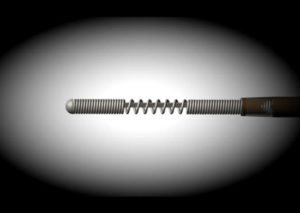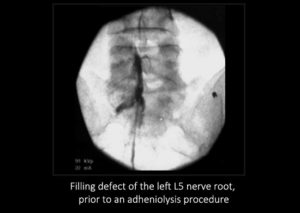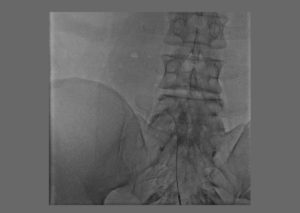Chronic persistent low back and lower extremity pain secondary to central spinal stenosis is common and disabling. Post lumbar spine surgery syndrome or failed back surgery syndrome with persistent pain continues to increase over the years. The speculated causes of post lumbar surgery syndrome include acquired stenosis, epidural fibrosis, arachnoiditis, radiculopathy, and recurrent disc herniation. Epidural fibrosis may account for as much as 20% to 36% of all cases of failed back surgery syndrome. Percutaneous epidural adhesiolysis has been employed in interventional pain management in the treatment of chronic, refractory low back and lower extremity pain after back surgery with these problems.
What do we do when back and leg pain does not go away with epidural injections? Surgery is often not an option. Your problem may not lend itself to surgery. You may not want surgery. You may be concerned about the risks of surgery or the possibility that surgery may not work. You may be concerned about the cost of surgery. Percutaneous adhesiolysis, also known as the Racz procedure, provides relief to patients who have not responded to epidural injections.
Scarring occurs after surgery, infection, bleeding and simply because we get older. Scar causes a number of problems which can lead to pain. Nerves in your spine need to move freely, just like the pistons in an engine, so that as you move, the nerves move. Scarring can tether the nerves, preventing this movement. Scars can also block epidural veins, causing them to become swollen and engorged. The swollen veins can then press on the nerves, causing the nerves to become inflamed and painful. Scarring can also prevent injections, like epidural injections, to work because the medication cannot get to the nerve. Percutaneous adhesiolysis works because it can break up scarring.
About 95% of the time, the procedure is done on an outpatient, one-day basis. It can also be done as a 3-day procedure. We do is to pass a special spring-wound catheter to the area of scarring. This catheter is soft enough to not damage the nerve. It is firm enough to be steerable.



